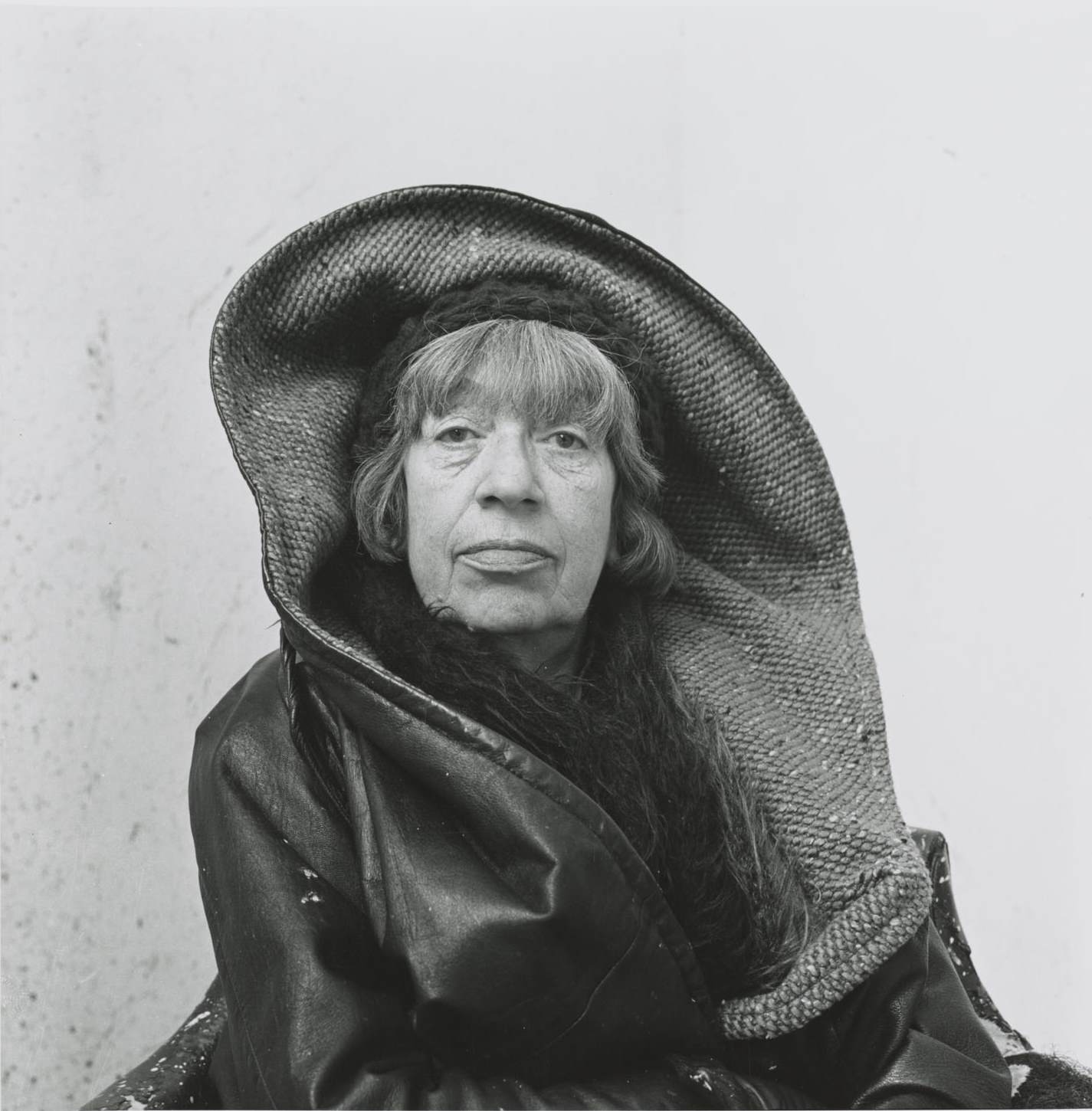[ad_1]
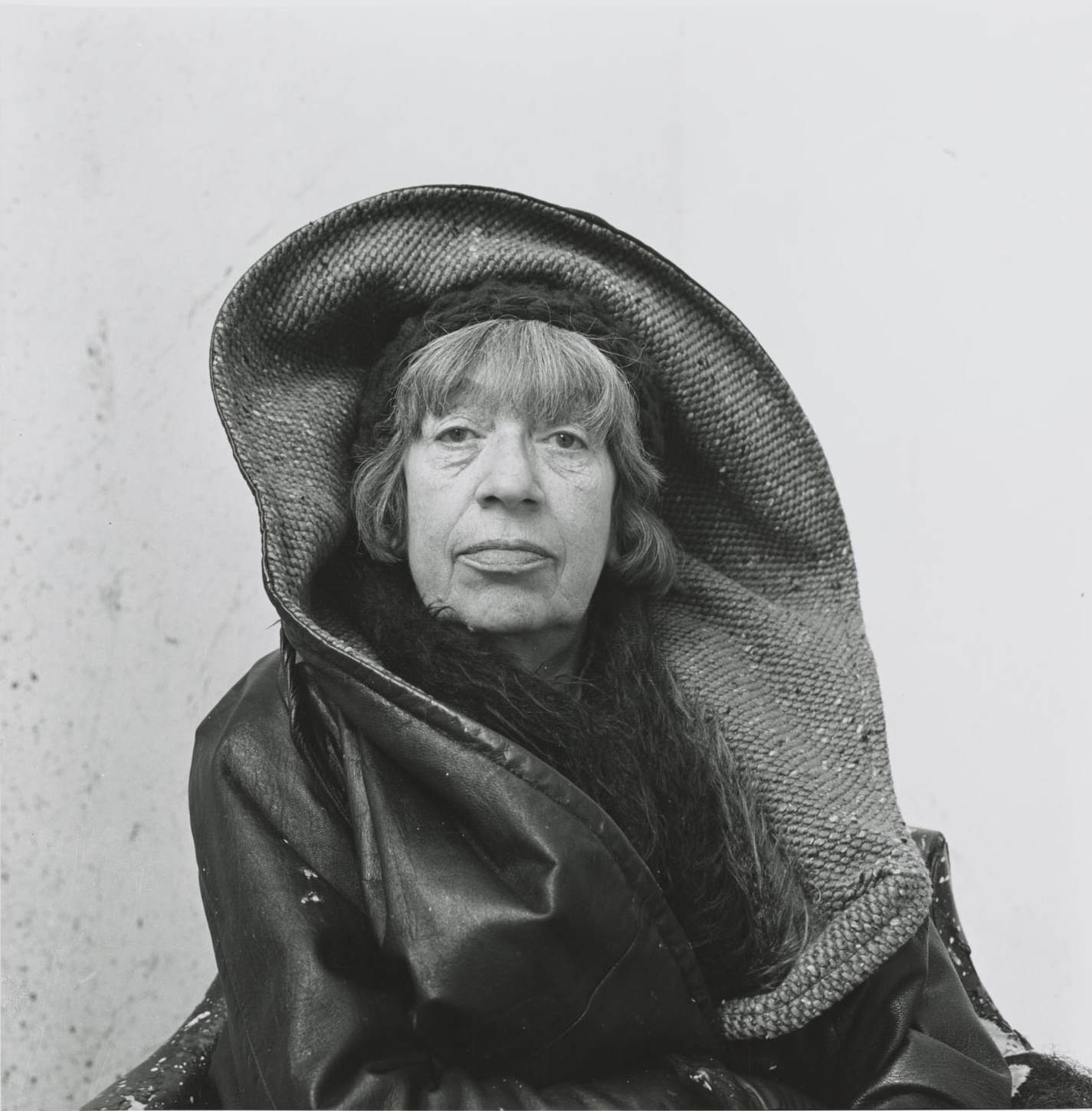
Lee Krasner shot by Irving Penn, Springs, New York, 1972.
©THE IRVING PENN FOUNDATION
Like many female artists of her generation, Lee Krasner endured being known first and foremost as someone’s wife. From 1945 to 1956, Krasner was married to fellow Abstract Expressionist Jackson Pollock. After Pollock died in 1956, and especially as Women’s Liberation became a force during the ’70s, critics came to view Krasner differently, as a talent worth watching. With a Krasner retrospective now on view at the Barbican Centre in London, we combed through our archives and pulled out excerpts from reviews, interviews, and more that chart the change in critical reception of Krasner’s work.
October 1949
Man and wife [at Sidney Janis Gallery in New York] are exhibiting side by side, illustrating the work of five European and four American artists and their talented wives. With the inclusion of several famous husbands—Arp, Ernst, Picasso, Hayter, Nicholson, Delaunay, De Kooning—to name a few, it becomes a study in itself to observe how much or how little the wives have resisted the overpowering influence of their “better halves.” . . . There is also a tendency among some of these wives to “tidy up” their husbands’ styles. Lee Krasner (Mrs. Jackson Pollock) takes her husband’s paints and enamels and changes his unrestrained, sweeping lines into prim little squares and triangles.
—“Reviews and previews,” by Gretchen T. Munson
May 1951
Far out on Long Island, in the tiny village of Springs, with the ocean as background and in close contact with open, tree-studded fields where cattle graze peacefully, Jackson Pollock lives and paints. With the help of his wife, Lee Krasner—former Hofmann student and an established painter in her own right—he has remodeled a house purchased there to fit the needs of the way of life they have chosen, and a short distance away is a barn which has been converted into a studio. It is here that Pollock is engrossed in the strenuous job of creating his unique world as a painter.
—“Pollock Paints a Picture,” by Robert Goodnough
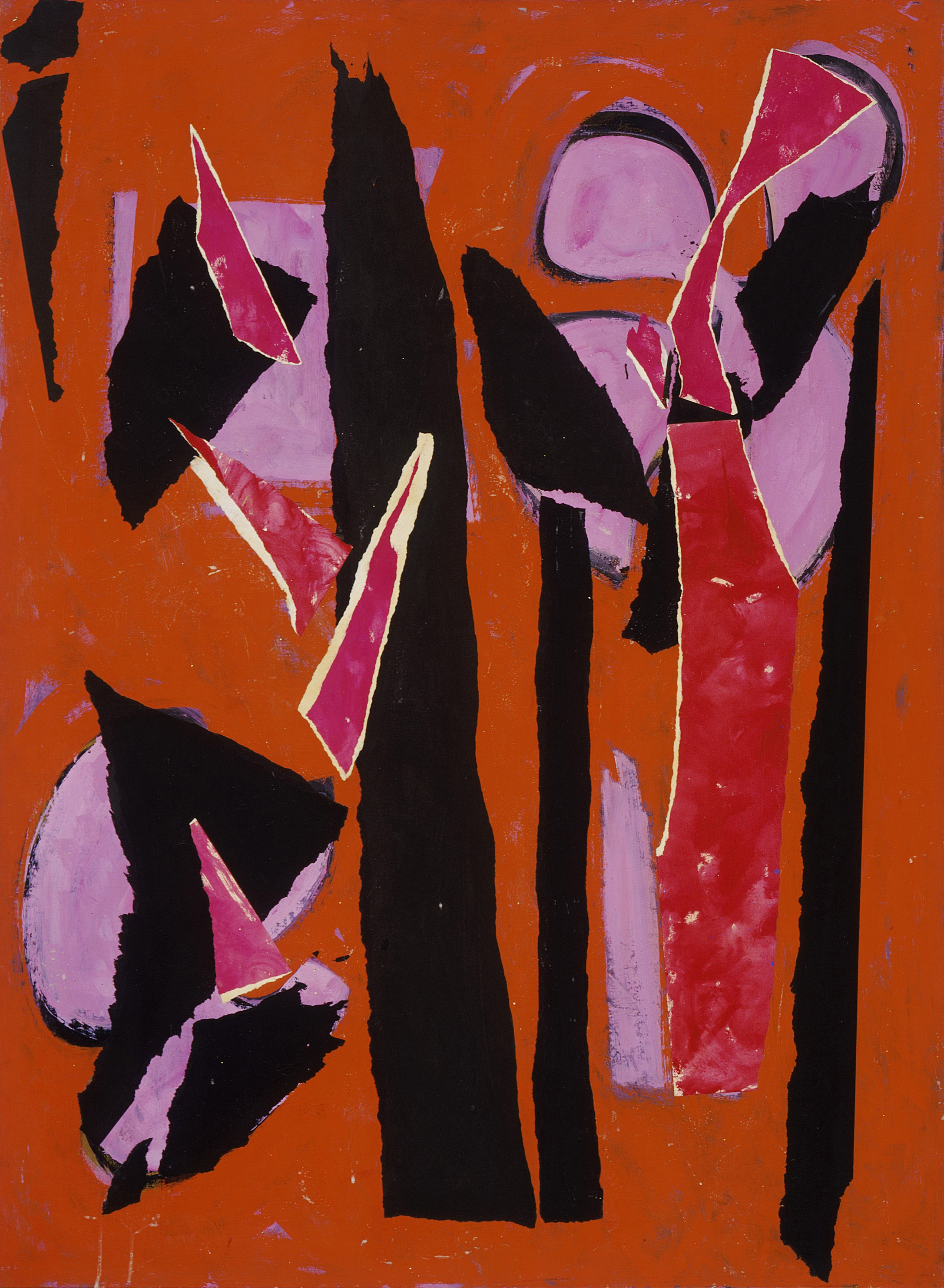
Lee Krasner, Desert Moon, 1955.
©THE POLLOCK-KRASNER FOUNDATION/DIGITAL IMAGE: MUSEUM ASSOCIATES, LOS ANGELES COUNTY MUSEUM OF ART/LOS ANGELES COUNTY MUSEUM OF ART
November 1951
Lee Krasner [at Betty Parsons Gallery in New York] has changed surprisingly from earlier, extremely intricate paintings and has turned to large, free abstractions which depend entirely on open areas of square, rectangular shapes and strips of color, these playing over the surface completely free of association. One comes away with the feeling of having been journeying through a vast uninhabited land of quiet color.
—“Reviews and previews,” by Robert Goodnough
November 1955
Lee Krasner’s abstractions [at Stable Gallery in New York], in oil and oil-plus-collage, have a larger scale than [they did] formerly; and some of the largest with huge forms including black patches with torn edges, and with titles like Stretched Yellow, Milkweed and Blue Level, are like nature photographs magnified. The irregular shapes and simple colors of the former paintings, as well as the bumpily irregular surface of Broken Grey, like a messed-up beach of pebbles—all these things “slow the pictures up.” When nature is photographed in detail, its orderliness appears: Krasner’s art, which seems to be about nature, instead of making the spectator aware of a grand design, makes him aware of a subtle disorder greater than he might otherwise have thought possible.
—“Reviews and previews,” by Fairfield Porter
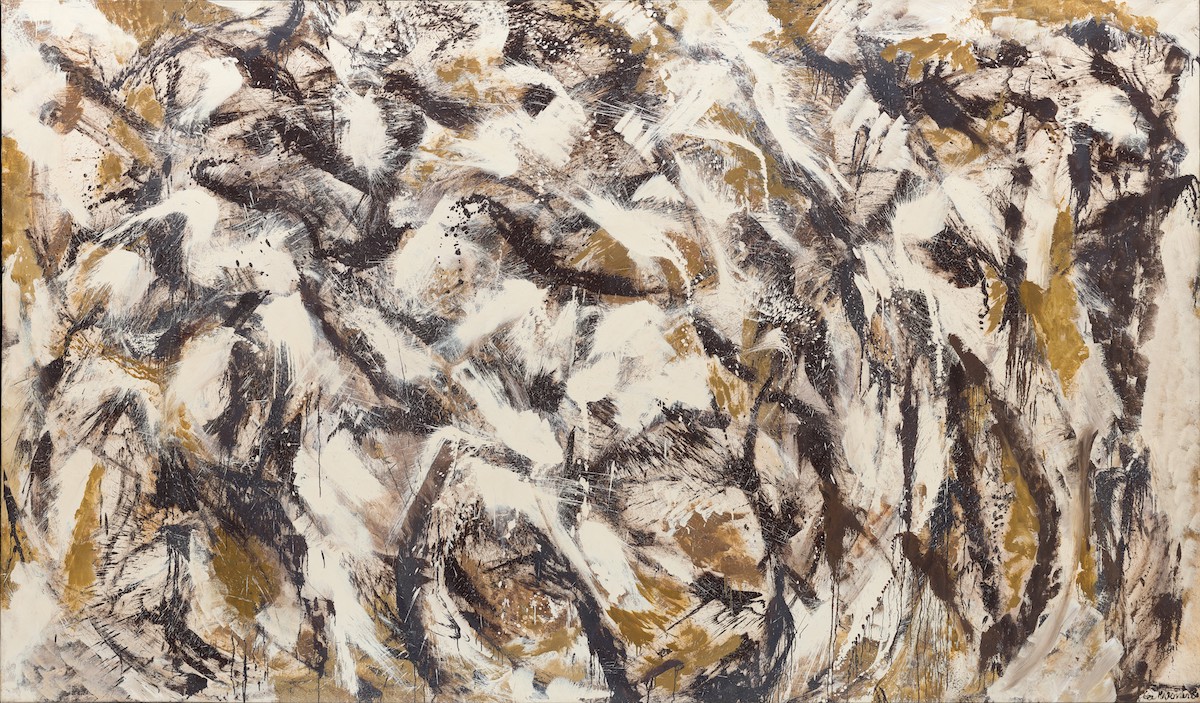
Lee Krasner, Polar Stampede, 1960.
©THE POLLOCK-KRASNER FOUNDATION/COURTESY KASMIN/SAN FRANCISCO MUSEUM OF MODERN ART
April 1958
Lee Krasner’s paintings [at Martha Jackson Gallery in New York] of the past two years postulate a new phase that has taken on a candid cue (or, one might speculate, an inevitable root) from a manner of her late husband . . . Here, the Pollock motifs of flesh and fecundity are repeated by his wife in a palette that oddly suggests off-pink cosmetic and fuchsia lipstick as well as flower petal, plant leaf and the void. The scale is audacious, the derivation as legitimate as a painter might wish.
—“Reviews and previews,” by Parker Tyler
March 1968
Lee Krasner knows a land of her own invention. . . . The newer works suggest plants or figures or something growing in the sun. In one series—also a continuation of earlier work—she plows the surface with dark furrows, sweeping centrifugally here and there over the surface, or jerking abruptly to a halt in a shower of paint spray. She makes repeating loops or enclosures like nests for “eyes” which look at each other and at the spectator, or perhaps there is a piece of fragmented anatomy, or a kind of open emptiness which swells from an invisible force, like canvas in the wind. . . .
It is not easy to have been Mrs. Jackson Pollock. There are many people who find it impossible to admit that she is any more than a wife who also paints, or to see anything in her work except a Pollock influence. Yes, of course, Pollock is in her work, and how could it be otherwise seeing that he was at the storm center of New York Abstract-Expressionism, and she was at that center. Naturally she learned from him and absorbed the influences he himself had absorbed. But Lee Krasner is a strong woman. She sails bravely into the teeth of whatever gale is blowing, and the handsome paintings in this current show demonstrate her continued strength and vitality.
—“Of Lilith and Lettuce,” by Lawrence Campbell
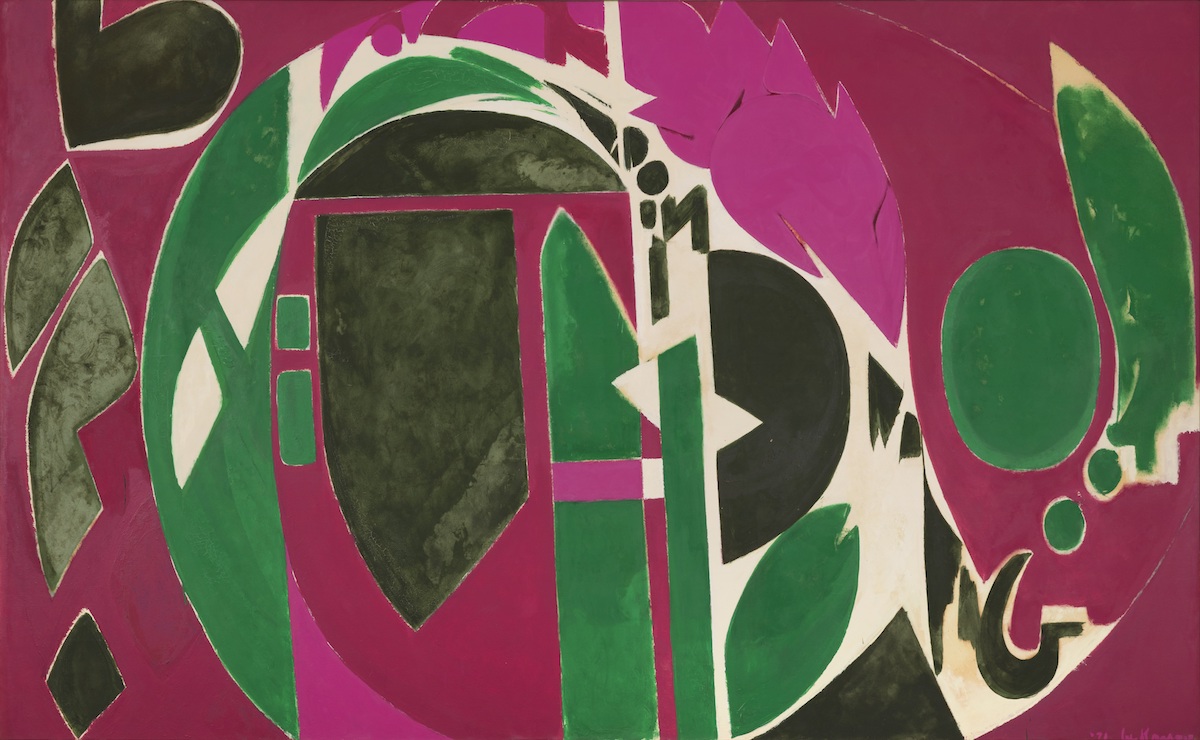
Lee Krasner, Palingenesis, 1971.
©THE POLLOCK-KRASNER FOUNDATION
January 1974
The paintings [by Krasner at the Whitney Museum in New York] that suggest the fiercest struggles proclaim a deep individuality. This quality is most evident where it is the most incongruous, e.g., in Combat, a brutal skirmish of orange and red, which conceals in its distances a soft Arcadian rhythm. Krasner is not a master, but she is on the edge of becoming one, and the titanic nature of her opposition suggests that she could become a very grand one.
—“Reviews and Previews,” by Al Brunelle
December 1981
In 1955 Pollock, now an artist of renown, began a heavy drinking cycle. He re-entered psychoanalytic therapy, and Krasner herself started in analysis. A year later, while Krasner was in Europe “taking a breather,” Pollock crashed his car into a tree near their home in The Springs and died instantly. Krasner is still bitter at the therapist “who told Jackson it was all right to drive drunk.” In the shock of grief, her own work was suspended for a while. “But then I realized if I didn’t get back to it I’d never make it at all.”
Now 73, actively painting and secure in her own worldwide reputation, Krasner will be the subject of a full-scale retrospective, organized by [Barbara] Rose, that is scheduled to open in 1983 at the San Francisco Museum of Modern Art. The exhibition will also come to the Museum of Modern Art in New York, where it is tentatively scheduled for the fall of 1984—one of the rare retrospectives given at MoMA to a woman artist.
—“Reviews,” by Frances De Vuono
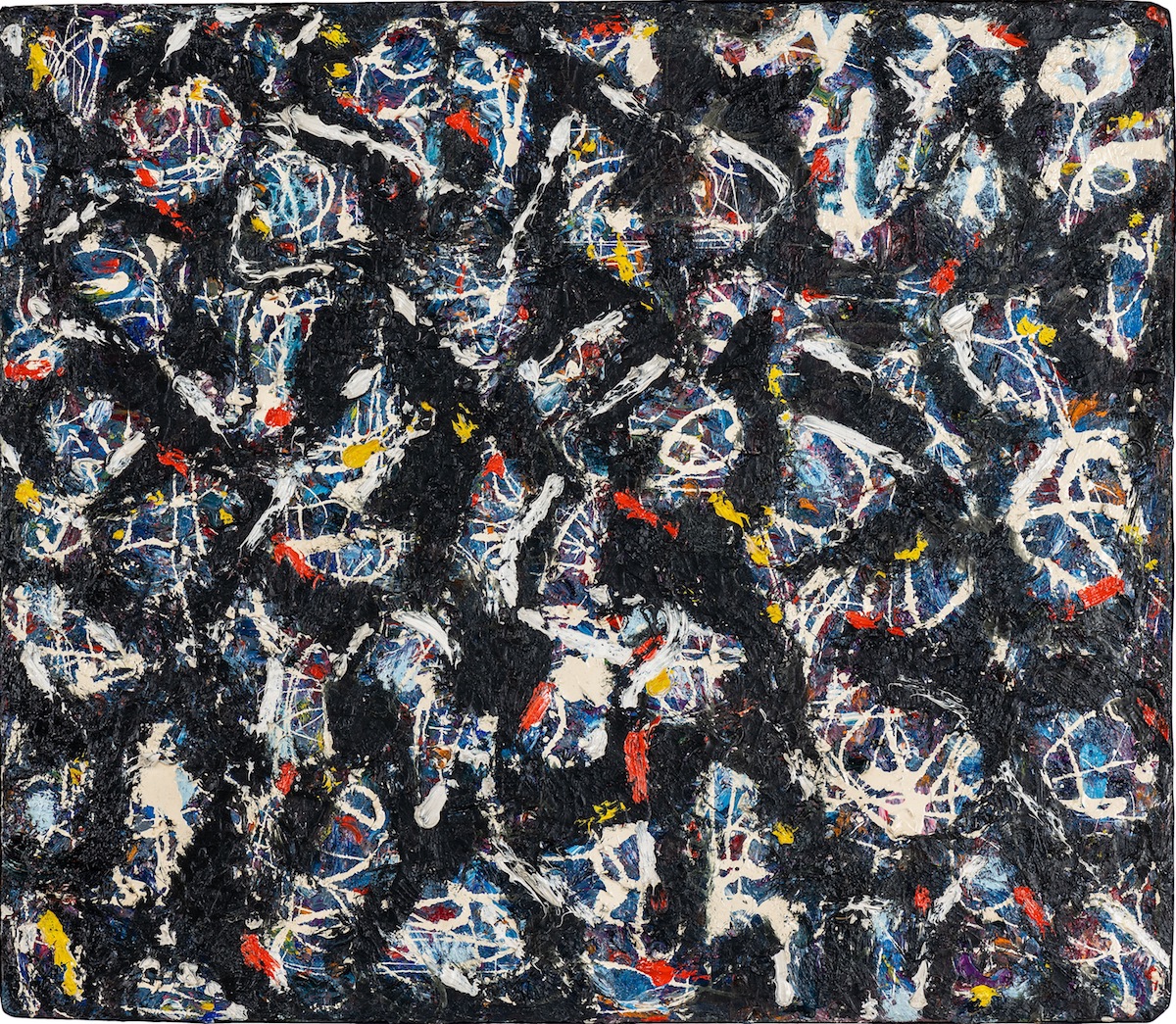
Lee Krasner, Abstract No. 2, 1947.
©THE POLLOCK-KRASNER FOUNDATION/IVAM CENTRE, SPAIN
February 1984
[One] important distinction between Krasner and Pollock has to do with her relative deemphasis of content in her paintings. For example, although she and Pollock both on their own became interested in Picasso in the late 1930s, Krasner most admired Picasso’s formal innovations while Pollock was mesmerized by his psychological farce. Krasner’s deep-seated antipathy toward Surrealism (again, similar to [Hans] Hofmann’s) has caused her to make remarks such as, “Any painter that arrests me with their content I feel is failed,” which she followed with the assertion that, in her opinion, a work must transcend its content to be a “real” painting. . . .
Krasner herself would probably argue that it is not important to try to read meaning into one of her works; the content of her art emerges from the whole. . . . Krasner [recently] lamented the fact that artists too rarely have the opportunity for the kind of self-assessment that only a retrospective provides, and that she has had significantly fewer occasions for a comprehensive overview than most. Under these circumstances and considering her age, the key issue for any thoughtful viewer (including herself) to consider is how Lee Krasner has managed to keep a 30-year-old style a vital medium of personal expression. “To say that Abstract Expressionism is dead has more to do with public relations than art,” she maintains. That stubborn independence Krasner was once warned against might just be her saving grace.
—“Lee Krasner’s Past Continuous,” by Ellen G. Landau
January 2015
While the superstars—like Krasner’s husband, Jackson Pollock—painted big, asserting their privilege and that of their patrons, Krasner and [Norman] Lewis generally worked in smaller formats, making pieces for modest rooms. This was due partly to circumstance. Lewis worked in a fetid basement, while Krasner painted in a cramped bedroom, ceding to Pollock a spacious barn. The external forms seem to shape the idioms. . . .
Her work from the late 1940s and early ’50s is handsome in a somber sort of way. Black and brown tend to predominate, enlivened by white and touches of red and ocher. Some of the pieces evoke ancient tablets or—some critics have suggested—the Hebrew writing that Krasner practiced as a child. Other works could be construed as boneyards. Kufic (1965), a wall-size work done nine years after Pollock’s death, suggests calligraphy writ large. It feels like a big exhalation of a breath held for a long time.
—“Reviews: Lee Krasner and Norman Lewis at Jewish Museum,” by Mona Molarsky
A version of this story originally appeared in the Summer 2019 issue of ARTnews on page 110 under the title “Land of Her Own Invention.”
[ad_2]
Source link

